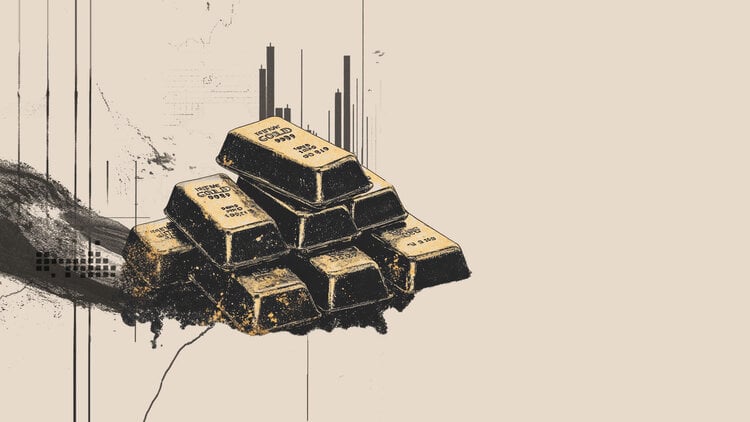- Despite minimal losses, AUD/USD remains at its highest level since January, just below 0.6740.
- The RBA’s hawkish stance on interest rates supports the Australian dollar.
- The highlight of the week will be US inflation figures on Thursday.
He Australian Dollar (AUD) The Australian dollar saw some losses on Monday against the USD, which still remains weak following last week’s data, which fueled dovish expectations for the Federal Reserve (Fed). With the pair holding its highest level since early January, upside for the Australian Dollar is limited by the strong data reported last week coupled with the Reserve Bank of Australia’s (RBA) hawkish stance.
The RBA looks set to be one of the last G10 central banks to initiate tapering, which should continue to support the AUD as it could benefit from divergence in monetary policy.
Daily Moves and Market Movers: AUD benefits from monetary policy divergences, eyes US CPI
- The US CPI is due out on Thursday. The headline index is expected to decline slightly to 3.1% year-on-year, while the core index is forecast to remain stable at 3.4% year-on-year.
- Potential easing by the Fed, juxtaposed with a likely prolonged tightening stance by the RBA, could boost AUD/USD in the coming months.
- Still, concerns about the slow momentum of the Chinese economy may hamper a sustained recovery for the Australian currency.
- This week offers no major events on the Australian calendar, with the AUD expected to maintain its gains against its peers as the RBA maintains its hawkish stance.
- On the Fed side, there is a 70% chance of a rate cut in September, depending on future data, with markets seriously betting on a rate hike this year by the RBA.
Technical Analysis: AUD/USD loses some ground, further correction possible
The AUD/USD lost ground on Monday, but the overall outlook is positive, supported by deep positive territories on the RSI and MACD technical indicators. With the pair securing a four-day winning streak and hitting its highest since January, bulls confirmed a bullish outlook last week.
However, traders should pay attention to potential overbought conditions, which suggest that a slight correction could be imminent. The next upside targets are at 0.6750 and 0.6780, while support levels to monitor are 0.6670, 0.6650 and 0.6630.
The Australian Dollar
One of the most important factors for the Australian Dollar (AUD) is the level of interest rates set by the Reserve Bank of Australia (RBA). Since Australia is a resource-rich country, another key factor is the price of its largest export, iron ore. The health of the Chinese economy, its largest trading partner, is a factor, as is inflation in Australia, its growth rate and the Trade Balance. Market sentiment, i.e. whether investors are betting on riskier assets (risk-on) or seeking safe havens (risk-off), is also a factor, with risk-on being positive for the AUD.
The Reserve Bank of Australia (RBA) influences the Australian Dollar (AUD) by setting the level of interest rates that Australian banks can lend to each other. This influences the level of interest rates in the economy as a whole. The RBA’s main objective is to maintain a stable inflation rate of 2%-3% by adjusting interest rates up or down. Relatively high interest rates compared to other major central banks support the AUD, and the opposite for relatively low ones. The RBA can also use quantitative easing and tightening to influence credit conditions, with the former being negative for the AUD and the latter positive for the AUD.
China is Australia’s largest trading partner, so the health of the Chinese economy greatly influences the value of the Australian Dollar (AUD). When the Chinese economy is doing well, it buys more raw materials, goods and services from Australia, which increases demand for the AUD and drives up its value. The opposite occurs when the Chinese economy is not growing as fast as expected. Therefore, positive or negative surprises in Chinese growth data often have a direct impact on the Australian Dollar.
Iron ore is Australia’s largest export, worth $118 billion per year as of 2021 data, with China being its main destination. The price of iron ore can therefore be a driver of the Australian dollar. Typically, if the price of iron ore rises, the AUD rises as well, as aggregate demand for the currency increases. The opposite occurs when the price of iron ore falls. Higher iron ore prices also tend to lead to a higher probability of a positive trade balance for Australia, which is also positive for the AUD.
The trade balance, which is the difference between what a country earns from its exports and what it pays for its imports, is another factor that can influence the value of the Australian dollar. If Australia produces highly sought-after exports, its currency will gain value solely because of the excess demand created by foreign buyers wanting to purchase its exports compared to what it spends on buying imports. Therefore, a positive net trade balance strengthens the AUD, with the opposite effect if the trade balance is negative.
Source: Fx Street
I am Joshua Winder, a senior-level journalist and editor at World Stock Market. I specialize in covering news related to the stock market and economic trends. With more than 8 years of experience in this field, I have become an expert in financial reporting.







